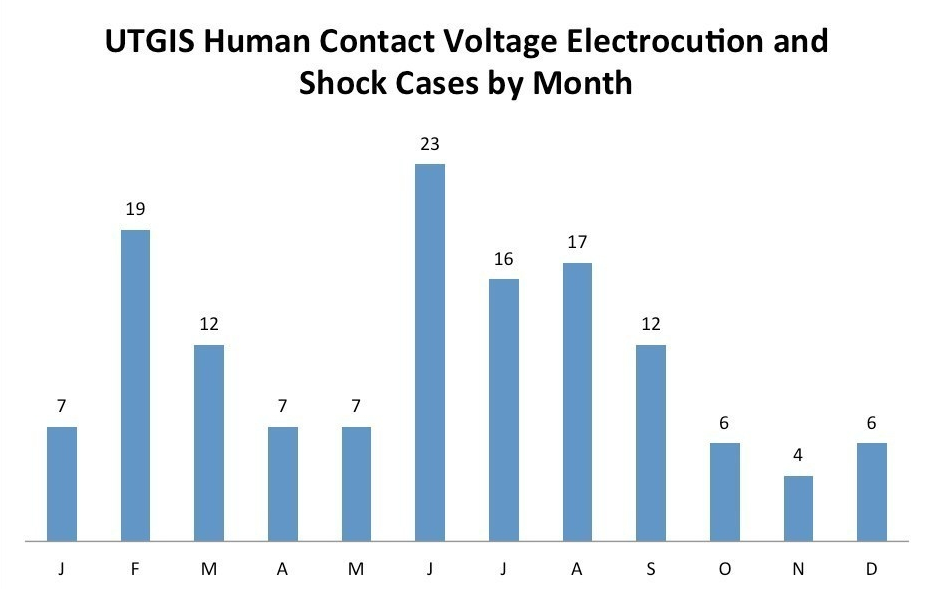Hi Bruce
I just sent Mike a chart that should answer your question. I do not know what your term "electrical contact" means.....but took a stab in the dark and considered it to mean "electrical shock".
Under a soon to be approved IEEE Standard (1695, Guide to Understanding, Diagnosing and Mitigating Stray and Contact Voltage) there is no formal distinction between voltage potential levels that produce shocks and those that produce electrocutions as it applies to "Contact Voltage". Human shocks and electrocutions due to Contact Voltage is what this newsletter is about, although we did not use the term in the write up. In many cases where a public electrocution has occurred, others have come forward and stated they had received an electrical shock on that same object. This is why our data was combined in the original chart on this newsletter- what is a shock to one person could take the life of another.
I disagree with you on one point: "The combination of these two distinct areas of electrical contact are typically done to over-emphasize the seriousness of the problem".
Generally, people (meaning pedestrians) do not report electrical shocks if they or their dog gets a little tingle from an object like a light pole- they simply go on their way.
Mobile scanning of cities by myself and other firms find very large numbers of publicly accessible objects with contact voltage potential on them. 30+ energized objects per night is normal. Some are at full phase voltage, but many are 1-5 volts. Almost all of these could produce a shock or electrocution under the right conditions, but when cross referenced, none were reported to 911 or 311 call centers.
Because public electrocutions usually make the local or national news, we believe those numbers to be somewhat accurate.
When looking at the number of public electrical shocks due to contact voltage, we believe that number to be greatly under reported.
Based on actual field testing, the number of found publicly accessible objects with voltage potentials high enough to shock or electrocute a human is substantially higher than the cases reported in the attached chart.
Hope this addressed your questions,
Mark
June 15 2016, 12:18 pm EDT
| 
